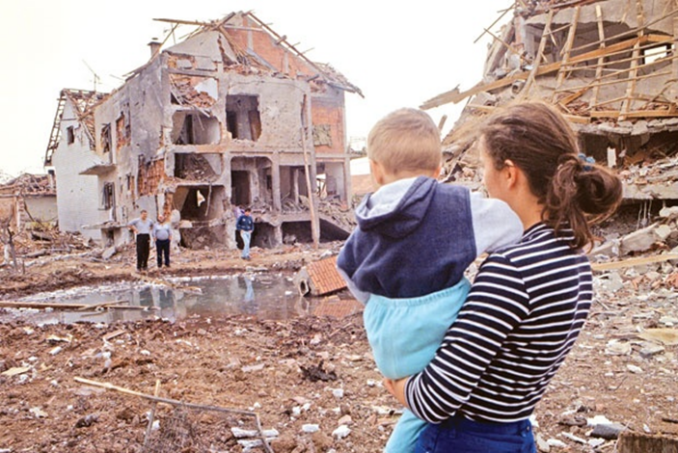1999 War on Yugoslavia opened path to U.S.-NATO aggression: An interview with Sara Flounders

The destruction of Yugoslavia during the U.S.-NATO bombing campaign, spring 1999. This war marked the first big step toward expanding NATO to a worldwide imperialist police force against oppressed nations.
Serbian internationalists in the New York City area have called for a symbolic demonstration on Sunday, March 24, in front of the United Nations headquarters to commemorate the 25th anniversary of the opening of the U.S.-NATO war on Yugoslavia. They scheduled the action between 1 p.m. to 2 p.m. at First Avenue and 43rd Street at Ralph Bunche Park.
The organizers support self-determination, not just for Serbia but also for the multinational country of Yugoslavia, which NATO bombs shattered for 78 days starting on March 24, 1999. NATO’s air war, which the Pentagon dominated, was the first active and open military intervention by the military alliance since it was established in 1949.
International Action Center
Workers World spoke with Sara Flounders, co-director of the International Action Center, who in 1999 went to Yugoslavia in a delegation, led by former U.S. Attorney General Ramsey Clark, in solidarity with the Yugoslavs, who were resisting the NATO attack. We asked her why, at this moment when Palestine is on the front line of the struggle to liberate the global South, and another hot war is raging in Ukraine, have her comrades decided to attend this protest at the U.N.
Flounders responded that “There is no doubt that at this moment Palestine is at the center of our attention and our comrades have supported many if not all of the protests organized by the heroic youth, whether their demands were to end the genocidal war on Gaza or to support the resistance to free Palestine.
“But it helps everyone’s understanding of the current period if we focus for a moment on this key anniversary. U.S. imperialism has directed NATO for all 75 years of the alliance’s history,” Flounders said. “In April of 1999, on its 50th anniversary, NATO was world imperialism’s chosen instrument to attack the remaining country in Eastern Europe whose people and leadership were attempting to defend its independence and its socialist goals.”
“During that April 1999 meeting,” she added, “NATO inducted the Czech Republic, Poland and Hungary into its ranks. At the end of 78 days of bombing of Serbia, NATO troops occupied the ethnic-Albanian province of Kosovo, and NATO troops are still there.”
A look at history since 1999 shows that Washington used NATO to assault Libya, to occupy Iraq and Afghanistan, and to intervene in Syria. NATO countries all recognized the puppet Juan Guaidó coup attempt in Venezuela.
NATO exercises pushed to the borders of Russia, provoking the war in Ukraine. NATO countries fed weapons to that war, which cost the lives of tens of thousands of Ukrainian and Russian youth and are still costing them. Meanwhile, NATO has expanded to 32 countries, most recently Sweden and Finland. That’s more than double the number of member states before 1999.
The goal of U.S. strategists was to dismantle the Russian Federation and colonize the Russian people, while seizing control of the Russian land mass. Up to now, they have failed in this attempt, despite their sanctions and the NATO military machine.
The war against Yugoslavia, which lasted really from the early 1990s until the overthrow of the pro-socialist government in the early 2000s, turned an independent country of 20 million people, embracing many nationalities, into six mini-states dependent on the imperialist powers, with an occupied puppet state in Kosovo. Four of those semi-colonies are now NATO members.
And, Flounders added, “It’s the NATO powers − again with the U.S. in the leadership − that have given military, economic and diplomatic backing to the Israeli assault on Gaza’s civilian population. We must never forget this. The peoples of Yugoslavia will certainly not forget it.”
Catalinotto and Flounders co-edited the book “Hidden Agenda: The U.S.-NATO War Against Yugoslavia,” published in 2001.

